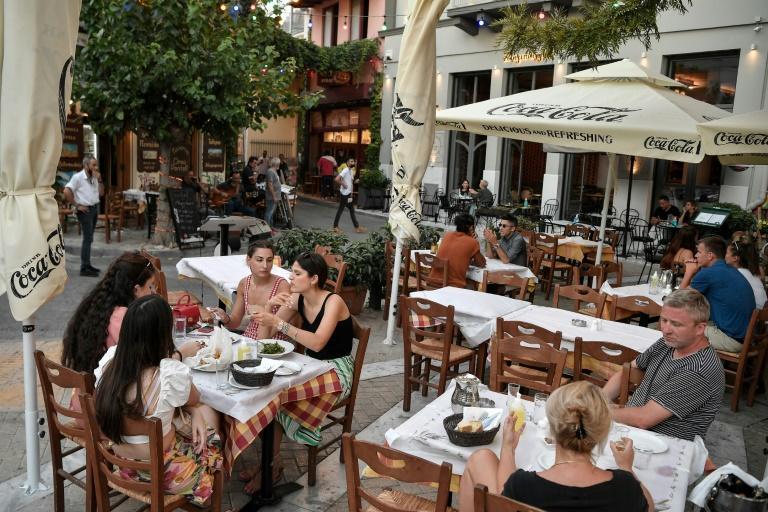Paris, July 13 :They’re back! Foreign tourists can once again be seen and heard strolling the streets of European cities. But despite Europe throwing open its doors, tourists say travelling during the pandemic is complicated.
Since June 9, it is possible for tourists to visit Europe again, depending on the health situation in their country of origin, and vaccination record of the traveller.
Among the different measures that can apply are a proof of full vaccination more than two weeks prior to travel, a certificate of Covid recovery less than six months prior to travel, a negative RT-PCR or antigen test, health form, quarantine or self-isolation of seven to 10 days.
The differences feed into uncertainty that travellers face.
“One day you need this, another day that. When we arrived at the airport, we were asked to fill out new papers, even though we had already filled out several,” remarked Brandon McDaniel, a Texas businessman who was on a five-week trip with his family.
His wife Crystal, a designer, added: “We know that it will be very expensive after a while to do all the tests required to enter each country, but if that’s what it takes to be able to travel again, we will do it.”
The United States is on a “green” list of countries according to a scale established in France in mid-June, which means people from there do not need a test if they have been fully vaccinated.
“Americans have wanted to come back for some time,” noted Corinne Menegaux, head of the Paris tourism office.
“In all surveys we see that Paris is still the main destination for them. And since vaccination campaigns began there earlier, many have been inoculated, which makes travelling easier,” she added.
In spite of the reopening, the number of US tourists visiting Paris is down by 85 percent from the level in June 2019, and arrivals by foreign tourists in general are down by 60 percent, the tourism office says.
“In 2019, there were 10 million people over the summer. In 2020 we welcomed two million and this year we expect between four and five million,” Menegaux said.
Denis Farias, who runs a souvenir shop near the landmark Eiffel Tower, said: “There are really no more tourists in Paris at the moment.
“Two years ago there were five of us (working) in the shop, now I am on my own.”
Which is ok with many of the tourists.
“Since there are fewer people, you can take the time to do more things, spend less time in line, it’s a relaxing atmosphere,” observed Mohammed Charpenel, who works in the real-estate sector in Dubai.
“It’s happiness again,” he concluded.
The tourism numbers may be down in part to the uncertainty whether Europe would allow in tourists for the summer, which discouraged some people when making their vacation plans months ago.
“The worst part was the waiting. We had booked in March but we didn’t know when France would reopen,” Chicago teacher Martin Douglass said.
“Today, travelling is like gambling.”
– In Madrid –
1,300 kilometres to the south in the Spanish capital, tourists told a different story.
“My plane was full,” said Luke Johnson, a 19-year-old student from Denver, Colorado.
“We would have liked to go to Germany and the Netherlands, but we would have had to make a quarantine.”
Elena Schupp, 56, a dual US-Spanish national who lives in South Carolina, said she made it to Madrid via Dallas with her daughter, despite numerous measures that made things a bit complicated.
“What will it be like for those who are not technically minded,” she asked.
“I know, for example, that my mother would never have been able to do it!”
From January through April, Spain welcomed 1.8 million foreign tourists, according to the national statistics institute.
That leaves the country well shy of its 2021 target of 45 million.
Euromonitor International, a market research company, has estimated that there will be 61 percent fewer Chinese visitors to Western Europe this year, despite a continent-wide digital Covid certificate designed to ease travel restrictions.
– In Venice –
Foreign tourists could also be found ambling along the canals of Venice, although in far fewer numbers than usual.
“Less tourists so it’s better for me!” said 34-year-old Ann Fang from Arizona.
She said she had already been vaccinated, so that didn’t pose a problem, but that there was a bit of paperwork.
“I think it’s a little more difficult because of all the documentation to come to Europe, but I got here,” she said.
Even those from “red” countries who need to request permission to enter Europe manage to make i
Kokulo Lawuobahsuno, 33, from Liberia, acknowledged he was a bit worried at first.
“But then I just followed the requirements, it wasn’t a problem for me,” he said
“I did my test, I’m fully vaccinated.”

















